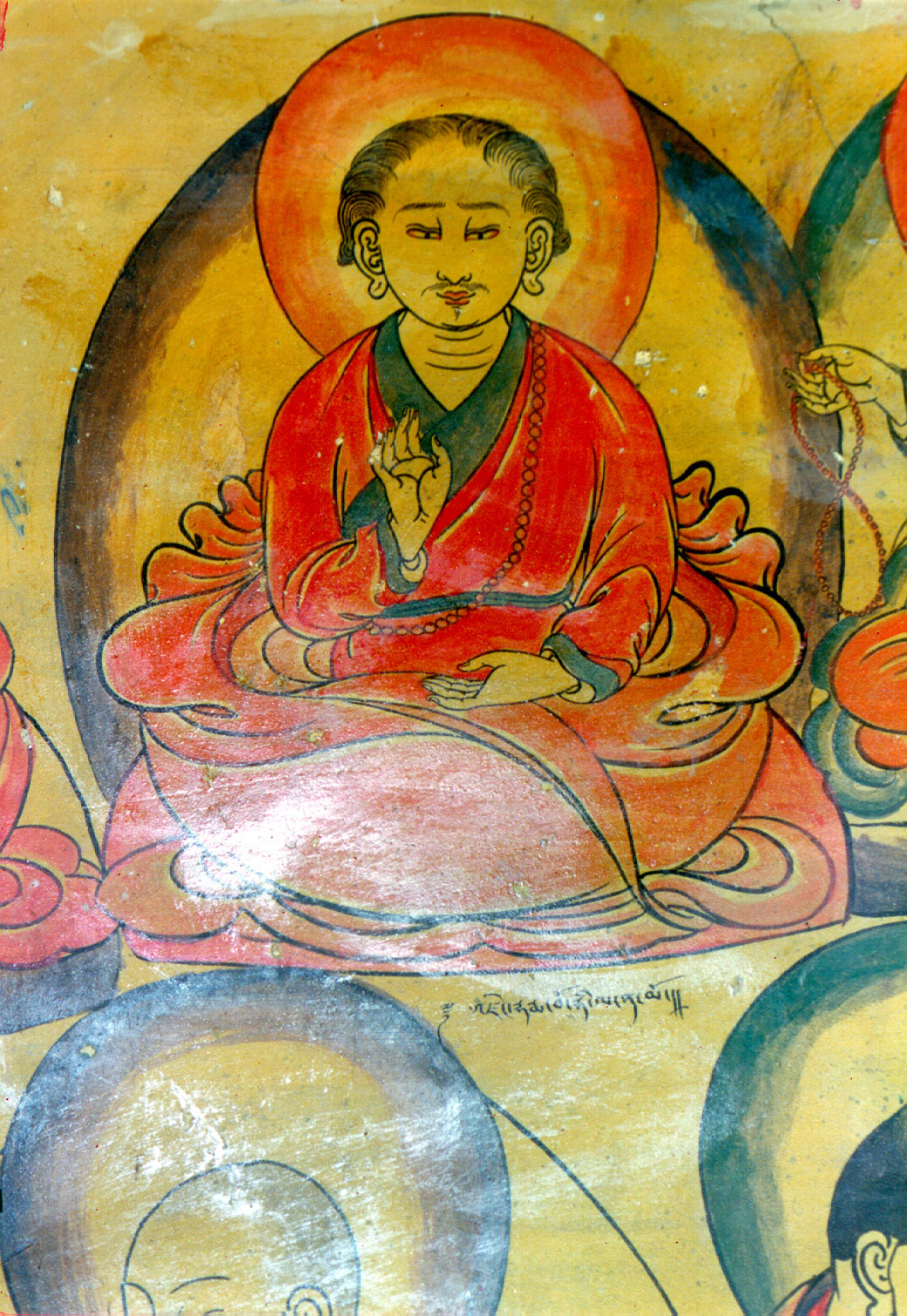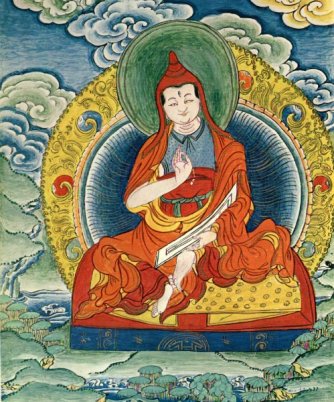|
Longdé
Longdé (, ) is the name of one of three scriptural divisions within Dzogchen, which is itself the pinnacle of the Yana (Buddhism)#The nine yanas, ninefold division of practice according to the Nyingma school of Tibetan Buddhism. The name "longdé" is translated as "Space Division" or "Space Series" of Dzogchen and emphasises the emptiness () or spaciousness () aspect of the Natural State. Due to the different approaches of various Dzogchen lineages, three series of teachings have developed, of which longdé is one. The other two divisions or series are semde and menngagde. Penor Rinpoche attributes longdé to Dorje Zampa, Sri Singha and Vairotsana's lineage. History The series of Space reflects the developments of the 11th–14th centuries and emphasizes "space" or "expanse" (''klong''). According to Sten Anspal this class of texts "is difficult to define or characterize uniformly" and "were not unified into a single system". Because of this, it has been seen either as nearl ... [...More Info...] [...Related Items...] OR: [Wikipedia] [Google] [Baidu] |
Nyingma Texts
Nyingma (, ), also referred to as ''Ngangyur'' (, ), is the oldest of the four major schools of Tibetan Buddhism. The Nyingma school was founded by PadmasambhavaClaude Arpi, ''A Glimpse of the History of Tibet'', Dharamsala: Tibet Museum, 2013. as the first translations of Buddhist scriptures from Pali and Sanskrit into Tibetic languages, Tibetan occurred in the eighth century. The establishment of Tibetan Buddhism and the Nyingma tradition is collectively ascribed to Khenpo Shantarakshita, Guru Padmasambhava, and King Trisong Detsen, known as ''Khen Lop Chos Sum'' (The Three: Khenpo, Lopon, Chosgyal). The Nyingma tradition traces its Dzogchen lineage from the Adi-Buddha, first Buddha Samantabhadra to Garab Dorje, and its other lineages from Indian mahasiddhas such as Sri Singha and Jnanasutra. Yeshe Tsogyal recorded the teachings. Other great masters from the founding period include Vimalamitra, Vairotsana, and Buddhaguhya. The Nyingma tradition was physically founded at Samye ... [...More Info...] [...Related Items...] OR: [Wikipedia] [Google] [Baidu] |
Dzogchen
Dzogchen ( 'Great Completion' or 'Great Perfection'), also known as ''atiyoga'' ( utmost yoga), is a tradition of teachings in Indo-Tibetan Buddhism and Bön aimed at discovering and continuing in the ultimate ground of existence. The goal of Dzogchen is the direct experience of this basis, called (Sanskrit: ). There are spiritual practices taught in various Dzogchen systems for discovering . Dzogchen emerged during the first dissemination of Buddhism in Tibet, around the 7th to 9th centuries CE. While it is considered a Tibetan development by some scholars, it draws upon key ideas from Indian sources. The earliest Dzogchen texts appeared in the 9th century, attributed to Indian masters. These texts, known as the Eighteen Great Scriptures, form the "Mind Series" and are attributed to figures like Śrī Siṅgha and Vimalamitra. Early Dzogchen was marked by a departure from normative Vajrayāna practices, focusing instead on simple calming contemplations leading to a di ... [...More Info...] [...Related Items...] OR: [Wikipedia] [Google] [Baidu] |
Nyingma
Nyingma (, ), also referred to as ''Ngangyur'' (, ), is the oldest of the four major schools of Tibetan Buddhism. The Nyingma school was founded by PadmasambhavaClaude Arpi, ''A Glimpse of the History of Tibet'', Dharamsala: Tibet Museum, 2013. as the first translations of Buddhist scriptures from Pali and Sanskrit into Tibetic languages, Tibetan occurred in the eighth century. The establishment of Tibetan Buddhism and the Nyingma tradition is collectively ascribed to Khenpo Shantarakshita, Guru Padmasambhava, and King Trisong Detsen, known as ''Khen Lop Chos Sum'' (The Three: Khenpo, Lopon, Chosgyal). The Nyingma tradition traces its Dzogchen lineage from the Adi-Buddha, first Buddha Samantabhadra to Garab Dorje, and its other lineages from Indian mahasiddhas such as Sri Singha and Jnanasutra. Yeshe Tsogyal recorded the teachings. Other great masters from the founding period include Vimalamitra, Vairotsana, and Buddhaguhya. The Nyingma tradition was physically founded at Samye ... [...More Info...] [...Related Items...] OR: [Wikipedia] [Google] [Baidu] |
Menngagde
In Tibetan Buddhism and Bon, Menngagde (, ), is the name of one of three scriptural and lineage divisions within Dzogchen (''Great Perfection'' ). Dzogchen is itself the pinnacle of the ninefold division of practice according to the Nyingma school of Tibetan Buddhism. Menngagde focuses on rigpa. The Menngagde or 'Instruction Class' of Dzogchen teachings are divided into two parts: ''trekchö'' and ''tögel''. Practice For general purposes, Menngagde may also be known as Nyingthik. Germano & Gyatso (2000: p. 240) note a similarity of practice between Chan-like formless meditations and Nyingthik/Menngagde: In the Dzogchen textual tradition Traditionally, Mañjuśrīmitra () is said to have classified all the Dzogchen teachings transmitted by his teacher, Garab Dorje, into three series: semdé (), Longdé (), and menngagdé. Mañjuśrīmitra's student Sri Singha reedited the oral instruction cycle and in this form the teaching was transmitted to Jñānasūtra and Vimal ... [...More Info...] [...Related Items...] OR: [Wikipedia] [Google] [Baidu] |
Yana (Buddhism)
Yāna (Sanskrit: यान and Pāli: "vehicle") refers to a mode or method of spiritual practice in Buddhism. It is claimed they were all taught by the Buddha, Gautama Buddha in response to the various capacities of individuals. On an outwardly conventional level, the teachings and practices may appear contradictory, but ultimately they all have the same goal. Nomenclature, etymology and orthography In form, yāna is a neuter noun derived from the Sanskrit root yā- meaning to "go to" or "move" or "reach". The suffix employed to form this noun may have different values: while primarily yāna is understood to refer to the means (kara.na) through which one goes to/ reaches a location, it may technically also refer to the action itself (bhāva). Yāna is therefore primarily a "vehicle", in most contexts relevant to the Buddhist doctrine of three yānas. "Vehicle" is often used as a preferred translation as the word that provides the least in the way of presuppositions about the m ... [...More Info...] [...Related Items...] OR: [Wikipedia] [Google] [Baidu] |
Semde
Semde (; Sanskrit: , "mind division", "mind class" or "mind series" is the name of one of three scriptural and lineage (Buddhism), lineage divisions within the Dzogchen (Great Perfection) tradition. The Nyingma school of Tibetan Buddhism traditionally classifies its Dzogchen teaching into three main divisions: Semde, Longdé (Space Series) and Menngagde (Secret Instruction Series). Semde texts are mostly said to be translations by figures of History of Tibetan Buddhism#First dissemination (7th–9th centuries), the early transmission (7th–9th centuries) of Buddhism to Tibet like Sri Singha, Śrī Siṅgha, Vairotsana and Vimalamitra. These texts emphasize the "awakened mind" (Tibetan: ''byang-chub-kyi sems'', Skt. ''bodhicitta''), which is the true nature of the mind and is essentially pure and perfect, just like Buddhahood. Semde texts critique tantric practice as being based on effort, and instead promote simple and effortless contemplation of the mind and its Emptiness (Buddhi ... [...More Info...] [...Related Items...] OR: [Wikipedia] [Google] [Baidu] |
Orgyen Chokgyur Lingpa
Chokgyur Lingpa or Chokgyur Dechen Lingpa (1829-1870) was a tertön or "treasure revealer" and contemporary of Jamyang Khyentse Wangpo and Jamgon Kongtrul. Regarded as one of the major tertöns in Tibetan history, his terma (religion), termas are widely practiced by both the Kagyu and Nyingma schools. Chokgyur Lingpa founded Neten Monastery in Nangchen in 1858. It is the seat of the Neten Chokling reincarnation line. Neten Chokling Rinpoche and Tsikey Chokling Rinpoche are the fourth reincarnations of Chokgyur Lingpa. This lineage traces back to Trisong Detsen, the Tibetan king who invited Padmasambhava to Tibet. See also *Lamrim Yeshe Nyingpo References External links"Chokgyur Lingpa and his termas" 1829 ... [...More Info...] [...Related Items...] OR: [Wikipedia] [Google] [Baidu] |
Vairotsana
Vairotsana () was a lotsawa or "translator" living during the reign of King Trisong Detsen, who ruled 755-97 CE. Vairotsana, one of the 25 main disciples of Padmasambhava, was recognized by the latter as a reincarnation of an Indian pandita. He was among the first seven monks ordained by Śāntarakṣita, and was sent to Dhahena in India to study with Śrī Siṅgha, who taught him in complete secrecy. Śrī Siṅgha in turn entrusted Vairotsana with the task of propagating the semde and longdé sections of Dzogchen in Tibet. He is one of the three main masters to bring the Dzogchen teachings to Tibet, the two others being Padmasambhava and Vimalamitra, and was also a significant lineage holder of trul khor. Shechen Gyaltsab mentions in his ''Pond of White Lotus Flowers'' that before meeting Śrī Siṅgha, Vairotsana had met the wisdom forms of the two vidyadharas Garab Dorje and Mañjuśrīmitra in a miraculous pagoda at Dhahena. After he had presented a huge off ... [...More Info...] [...Related Items...] OR: [Wikipedia] [Google] [Baidu] |
Nyingma Gyubum
''Nyingma Gyubum'' (, ''Collected Teachings of the Ancients'') is a collection of Vajrayana texts reflecting the teachings of the Nyingma ("Ancient") school of Tibetan Buddhism. The contents of this collection comprises the Inner Tantras common to the Nyingma: the '' Mahayoga'', '' Anuyoga'', and ''Atiyoga'' (Dzogchen) tantras. An important facet of Bhutanese culture, studying the ''Nyingma Gyubum'' is considered honorable. Canonization ''Nyingma Gyubum'' texts are generally excluded from the Kangyur and Tengyur sections of the Tibetan canon by the Sarma (New Translation) traditions ( Sakya, Kagyu, Gelug). It is theorized that the formation of the first edition of the ''Nyingma Gyubum'' began in the twelfth century, with certain texts drawn from the Terma literature. There are only seven extant texts of the Space Class of Dzogchen, each of which is contained in the ''Nyingma Gyubum''. Extant versions Cantwell and Mayer have, since 1996, published four monographs on th ... [...More Info...] [...Related Items...] OR: [Wikipedia] [Google] [Baidu] |
Extant Literature
Ancient literature comprises religious and scientific documents, tales, poetry and plays, royal edicts and declarations, and other forms of writing that were recorded on a variety of media, including stone, clay tablets, papyri, palm leaves, and metal. Before the spread of writing, oral literature did not always survive well, but some texts and fragments have persisted. An unknown number of written works have not survived the ravages of time and are therefore lost. Incomplete list of ancient texts Bronze Age Early Bronze Age: 3rd millennium BC (approximate dates shown). The earliest written literature dates from about 2600 BC (classical Sumerian). Certain literary texts are difficult to date, such as the '' Egyptian Book of the Dead'', which was recorded in the '' Papyrus of Ani'' around 1240 BC, but other versions of the book probably date from about the 18th century BC. * 2600 BC: Sumerian texts from Abu Salabikh, including the '' Instructions of Shuruppak'' and th ... [...More Info...] [...Related Items...] OR: [Wikipedia] [Google] [Baidu] |





